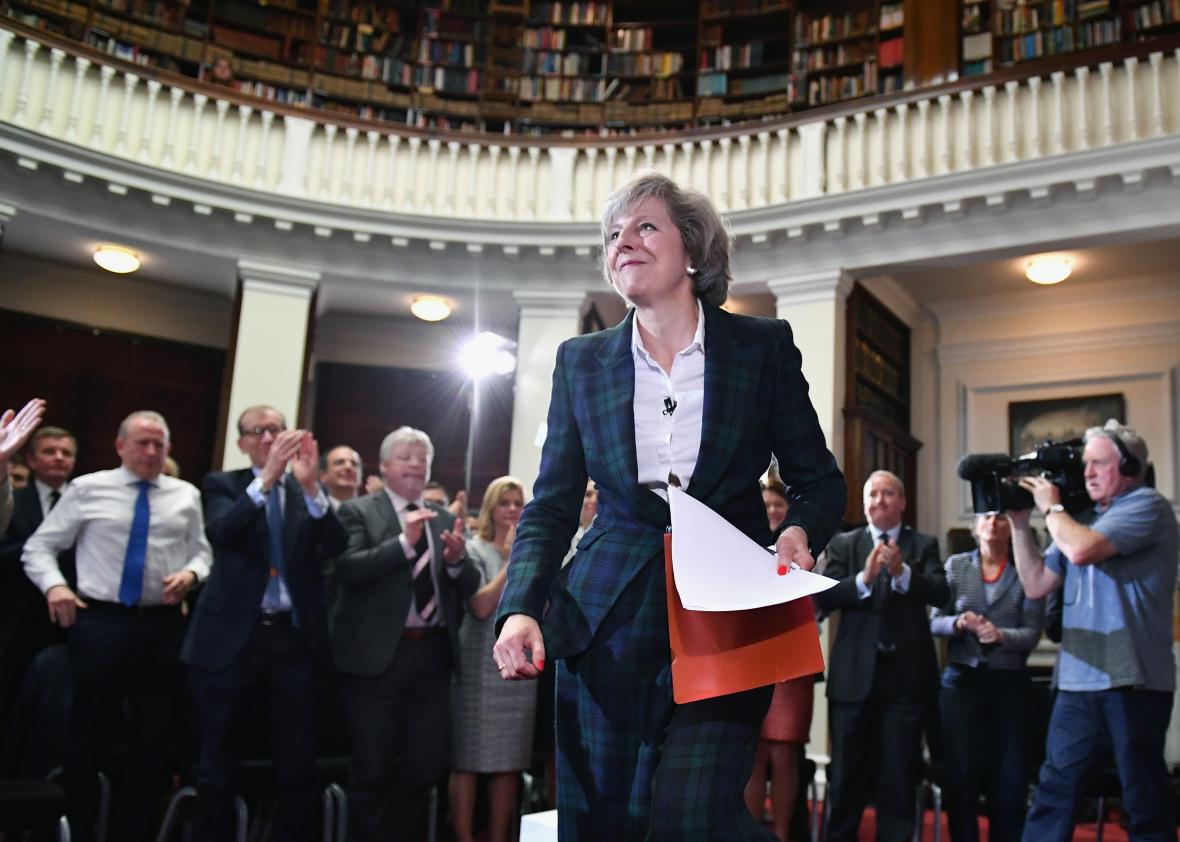Theresa May became the United Kingdom’s second ever female prime minister and first since Margaret Thatcher on Wednesday, as David Cameron stepped down and the political flotsam thrown up by the referendum to leave the European Union last month began to settle.
May formally ascended to power after “kissing hands” with Queen Elizabeth II at Buckingham Palace, the term given to the ceremony that marks the formation of a new government. Her audience came shortly after Cameron’s own, during which the queen “graciously” accepted the conservative leader’s resignation, as reported by the BBC. May served as Cameron’s home secretary during the his six-year tenure as prime minister, presiding over domestic issues including “security, policing and immigration” per the New York Times.
May follows Cameron through the doors of 10 Downing Street, the official residence of the prime minister, as leader of the country’s Conservative Party. Cameron departed No. 10 with his family before meeting with the queen this morning. Though admitting he had “not got every decision right” while in office, Cameron affirmed his belief that “today, our country is much stronger” and praised May for her “strong and stable leadership.” With his decision to hold the EU referendum and failure to rally the nation around his desired outcome of remaining in the union, an argument can be made that Cameron is actually one of the worst prime ministers in history. Like her former boss, May opposed the Brexit referendum in which a majority of British citizens elected to sever membership to the EU.
Rocketed to power in the chaotic aftermath of Brexit, a vote that ultimately destroyed Cameron’s mandate to govern, May entered office relatively unchallenged. The storm front quickly swept away rival claimants to the prime ministry following Cameron’s resignation. Conservative Andrea Leadsom, the final roadblock to her ascension, dropped out of consideration on Monday in a bid to quell the country’s riotous post-referendum markets, the Guardian reported.
But uncertainty abounds, much of it centered around May’s fitness to lead the country through a period of profound uncertainty. From the New York Times:
The task before her is daunting. She must negotiate the terms of the country’s withdrawal from the bloc in a way that minimizes the economic damage but lives up to the spirit of the vote, especially in limiting immigration, while at the same time seeking to maintain British influence on the global stage.
She is confronting strains on the continued existence of the United Kingdom as currently constituted, with Scotland again agitating for independence and some republicans in Northern Ireland trying to use the “Brexit” vote to leave the European Union as reason to advance the cause of unification with Ireland.
And like leaders on both sides of the Atlantic, she is facing populist political forces that are challenging traditional ideologies and electoral coalitions, introducing a volatile element into governance.
May’s first address as prime minister, delivered outside 10 Downing Street on Wednesday, indicated her resolve to confront the domestic forces that motivated Brexit. She pledged to combat “burning injustice” in British society and create a union “between all of our citizens,” including the economically and socially marginalized, the Guardian reported.
“The government I lead will be driven not by the interests of the privileged few, but by yours. We will do everything we can to give you more control over your lives,” she said.
A 2014 Financial Times profile of May labeled her a supporter of “gender equality, champion of female representation at Westminster and a backer of gay marriage,” the 2014 legalization of which Cameron touted as a signal achievement of his leadership on Wednesday.
But May has also criticized high levels of immigration into the United Kingdom, a factor that motivated Brexit’s “Leave” faction. “When immigration is too high, when the pace of change is too fast, it’s impossible to build a cohesive society,” she said in an October 2015 speech.
With the rival Labour Party in disarray, May currently enjoys a weak opposition. She will likely announce senior appointments to her new government late on Wednesday, including a minister to oversee the Brexit transition reportedly. Among the first? None other than Boris Johnson, the former London mayor who was favored to succeed Cameron but declined to don the leadership mantle late last month, who will serve as foreign secretary.
